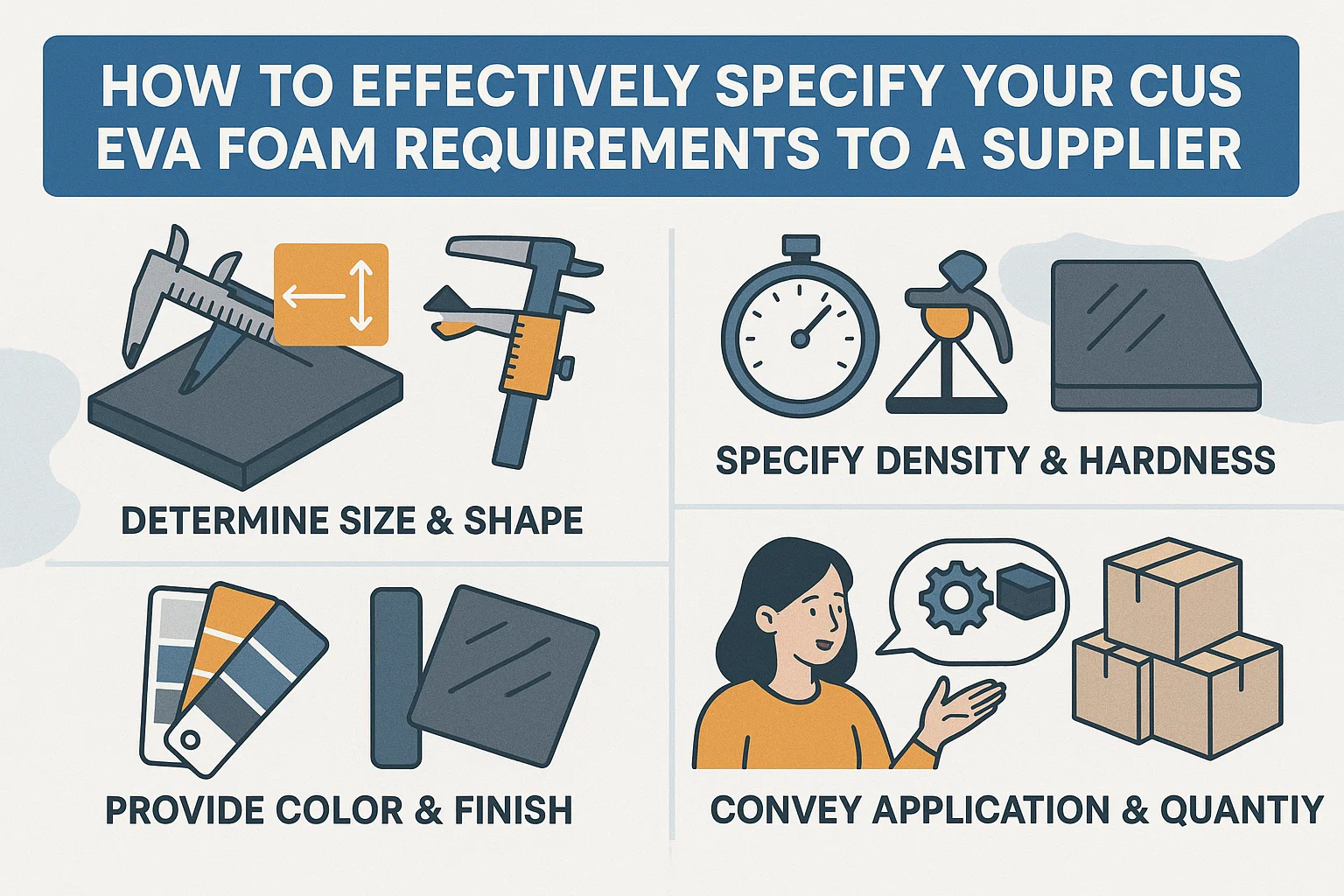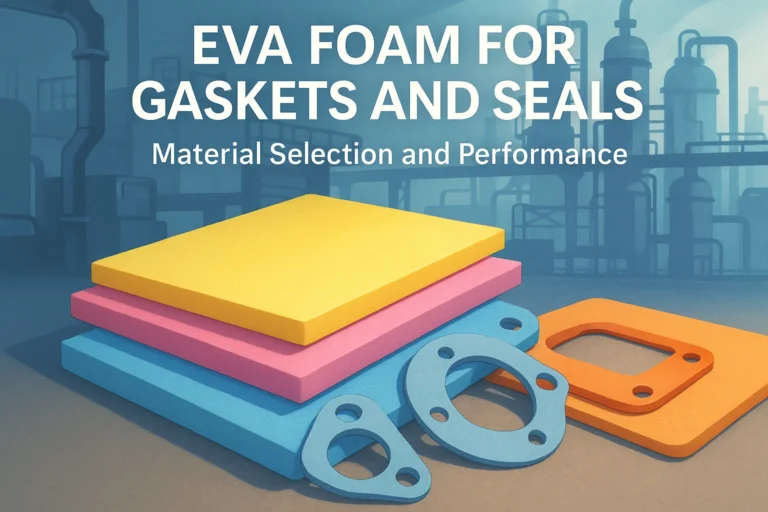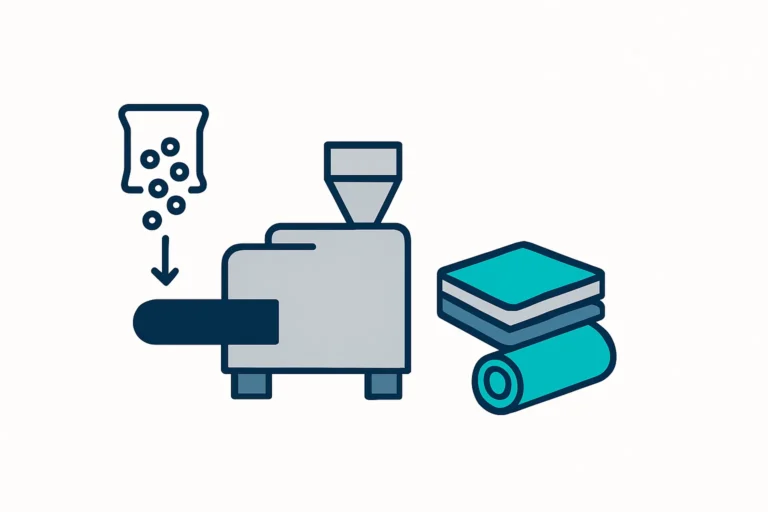How to Effectively Specify Your Custom EVA Foam Requirements to a Supplier
Ethylene-vinyl acetate (EVA) foam is a remarkably versatile material, finding applications across a vast spectrum of industries, from protective packaging and sports equipment to the automotive and medical sectors. Its unique combination of flexibility, durability, and shock-absorbing qualities makes it an ideal choice for countless bespoke applications. However, to truly harness the potential of custom EVA foam solutions, effectively communicating your specific requirements to your supplier is paramount.
At Damao Tech, we understand the critical role that precisely engineered materials play in the success of your products. While our primary expertise lies in providing advanced recycling machinery, we also recognise the importance of high-quality input materials for the industries we serve. This comprehensive guide will walk you through the essential steps to clearly articulate your needs, ensuring you receive the perfect eva foam that meets your exact specifications.
Why Detailed Specifications Are Crucial
Supplying a vague or incomplete brief can lead to misunderstandings, delays, and ultimately, a final product that doesn’t perform as intended. Investing the time and effort to detail your requirements upfront saves valuable resources in the long run. Clear specifications enable your supplier to:
- Accurately Understand Your Application: This forms the foundation for selecting the appropriate EVA foam grade and manufacturing process.
- Provide an Accurate Quotation: Without precise details, any pricing will be an estimate at best, potentially leading to unexpected costs later on.
- Manufacture to the Correct Tolerances: Dimensional accuracy and material properties are often critical for the functionality and performance of your final product.
- Ensure Quality Control: Well-defined specifications act as the benchmark against which the manufactured foam can be rigorously tested.
- Offer Informed Advice: A knowledgeable supplier, like those Damao Tech collaborates with, can often suggest improvements or more cost-effective solutions if they have a complete picture of your needs.
Key Parameters to Specify for Your Custom EVA Foam
To ensure your EVA foam supplier fully grasps your requirements, you need to provide detailed information across several key parameters. Let’s delve into each of these.
1. Material Grade and Density
EVA foam comes in various densities, each offering different levels of cushioning, support, and durability. Specifying the correct density is crucial for performance.
- Density Range: This is typically measured in kilograms per cubic metre (kg/m³). Higher-density foams are generally more rigid and durable, offering better impact absorption, while lower-density foams are softer and more flexible.
- Application Context: Explain the intended use of the foam. Is it for packaging delicate electronics, providing cushioning in orthopaedic footwear, or acting as a structural component in a piece of equipment? This context helps your supplier recommend the most suitable density. For instance, a density of 30 kg/m³ might be ideal for a soft packaging insert, whereas a component for a gym floor might require a density of 100 kg/m³ or higher.
2. Dimensions, Shape, and Tolerances
Accurate dimensional specifications are vital for ensuring the foam component fits seamlessly into your final product or assembly.
- Length, Width, and Thickness: Provide exact measurements. It is crucial to also specify the acceptable tolerances (e.g., ±0.5mm). Clearly indicate whether these are nominal dimensions or critical dimensions that must be met without deviation.
- Shape Complexity: Describe the shape of the required foam part. Simple rectangular sheets are straightforward, but more complex 2D or 3D geometries will require detailed drawings or digital files.
- Quantity: Clearly state the required volume, both for initial prototypes and for the full production run. This directly impacts tooling decisions, manufacturing processes, and the final cost per unit.
3. Colour and Surface Finish
While often considered aesthetic, colour and surface finish can have functional implications.
- Colour: To ensure consistency across batches, specify the desired colour using a standard colour matching system like Pantone or RAL.
- Surface Texture: Indicate if a specific surface texture is required. This could be a smooth finish, an embossed pattern for grip (common in yoga mats), or a slightly tacky surface.
- ‘Skin’: EVA foam can be produced with a smooth, non-porous outer layer or ‘skin’ on one or both sides. Specify if this is required, as it can enhance durability and water resistance.
4. Hardness and Mechanical Properties
The hardness of the foam is a key factor in its performance, particularly for cushioning, support, and impact-absorption applications.
- Hardness: This is most commonly measured on the Shore A or Shore C durometer scales. Specify the desired hardness value (e.g., Shore A 45). Providing a target range can also be helpful.
- Compression Set: This measures the permanent deformation of the foam after being subjected to a sustained compressive force. A low compression set value is desirable for applications requiring long-term resilience, such as seals or gaskets.
- Tensile Strength and Elongation: These properties define the foam’s resistance to tearing and stretching. They are critical for applications where the foam will be under tension.
5. Specific Performance Requirements
Depending on the environment and intended use, your EVA foam may need to meet specific performance criteria.
- Water Resistance: All closed-cell EVA foam is inherently water-resistant, but you should specify if it needs to be completely waterproof for marine or submersion applications.
- UV Resistance: For outdoor use, UV stabilisers must be added to the formulation to prevent the foam from becoming brittle and discoloured when exposed to sunlight.
- Chemical Resistance: If the foam will come into contact with oils, solvents, or other chemicals, list these substances so the supplier can ensure the foam grade is suitably resistant.
- Temperature Stability: Specify the operating temperature range the foam must withstand without losing its structural integrity or mechanical properties.
- Flame Retardancy: For applications in electronics, automotive interiors, or construction, you may need the foam to meet specific flame retardancy standards (e.g., UL 94).
- Conductivity/Anti-Static: For packaging or handling sensitive electronic components, anti-static or conductive EVA foam is essential to prevent electrostatic discharge (ESD).
6. Regulatory Compliance and Certifications
In today’s global market, adherence to regulations is non-negotiable.
- REACH Compliance: Essential for products sold within the European Union, this regulation addresses the safe use of chemical substances.
- RoHS Compliance: The Restriction of Hazardous Substances directive is mandatory for electrical and electronic equipment sold in the EU.
- Medical or Food Grade: If the foam will be used in medical devices or will have contact with food, it must meet stringent industry-specific standards and certifications (e.g., ISO 10993 for biocompatibility).
Providing Supporting Documentation
To eliminate ambiguity, always support your written specifications with clear documentation.
- Technical Drawings: For any part more complex than a simple sheet, provide 2D technical drawings with all dimensions, angles, and tolerances clearly labelled.
- CAD Files: 3D CAD files (e.g., .STEP, .IGES) are the preferred format for modern manufacturers. They can be fed directly into CNC machinery, ensuring maximum accuracy.
- Physical Samples: If you are replicating or improving upon an existing part, providing a physical sample is invaluable for your supplier.
Working with Damao Tech: A Partnership Approach
At Damao Tech, we believe in fostering strong, collaborative partnerships. When you work with our network of trusted material suppliers, we encourage you to be as detailed as possible. This approach ensures that you receive a solution that not only meets but exceeds your expectations. Our deep understanding of material science and manufacturing processes, gained through our leadership in the recycling machinery industry, allows us to provide expert guidance.
By following the guidelines outlined in this article, you can significantly enhance the clarity and effectiveness of your communication with EVA foam suppliers, leading to superior results and a more efficient, cost-effective procurement process.
Frequently Asked Questions (FAQ)
- What is the typical lead time for custom EVA foam manufacturing?
Lead times vary significantly based on the complexity of the part, the tooling required, the order quantity, and the supplier’s production schedule. A simple die-cut part might take 2-3 weeks, whereas a custom-moulded component could take 6-8 weeks or more for the initial run. Always discuss lead times once you have provided your full specifications.
- Can I request a sample of the custom EVA foam before placing a large order?
Yes, and you absolutely should. Any reputable supplier, including those Damao Tech works with, will provide pre-production samples for your approval. This is a critical step to verify the material, dimensions, and finish before committing to a full production run.
- How does the order quantity affect the price of custom EVA foam?
Order quantity has a significant impact on the per-unit price. Larger orders allow manufacturers to achieve economies of scale, reducing the cost per piece. Tooling costs (for moulds or cutting dies) are typically a one-time charge, so this cost is amortised over a larger number of units, further reducing the unit price on high-volume orders.
Ready to Discuss Your Custom EVA Foam Needs?
At Damao Tech, we are committed to helping professionals like you source the best possible materials for your applications. By ensuring your specifications are clear and comprehensive, you pave the way for a successful manufacturing partnership.
Contact us today or request a quote to discuss your custom EVA foam requirements and discover how the expertise of Damao Tech can support your material sourcing and processing needs.







